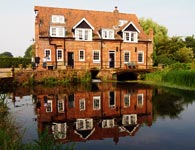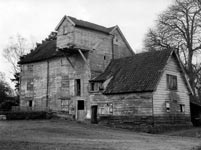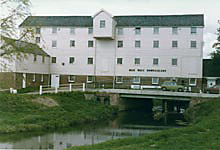|
Sadly over the future years, in many water mill, I would be involved with removing the mill stones and installing modern hammer mills. These involved high speeds and it was impossible to gear the water wheels up to this speed (3,000rpm). So, we installed diesel engines and later electric motors to drive them leaving the water wheel to drive the hoist, oat crusher, maize cutter and other machinery. The introduction of roller mills for producing flour, the cost of dressing mill stones, heavy maintenance, lack of demand for stone ground flour and only small amounts of meal for animal feed saw the end of most of the water mills. In Norfolk only one water mill remains working today as it did years ago, it is at Letheringsett near Holt. It is well worth a visit and you can even buy stone ground flour there which is produced at the mill. As for the others, they were knocked down, burnt down or turned into flats, this was their fate. In the Domesday Book (1086) there were 500 water mills listed in Norfolk and Suffolk.
Peter Gowing, retired millwright, F. Flowerdew & Son, NIAS Journal -
5th December 2008 |








